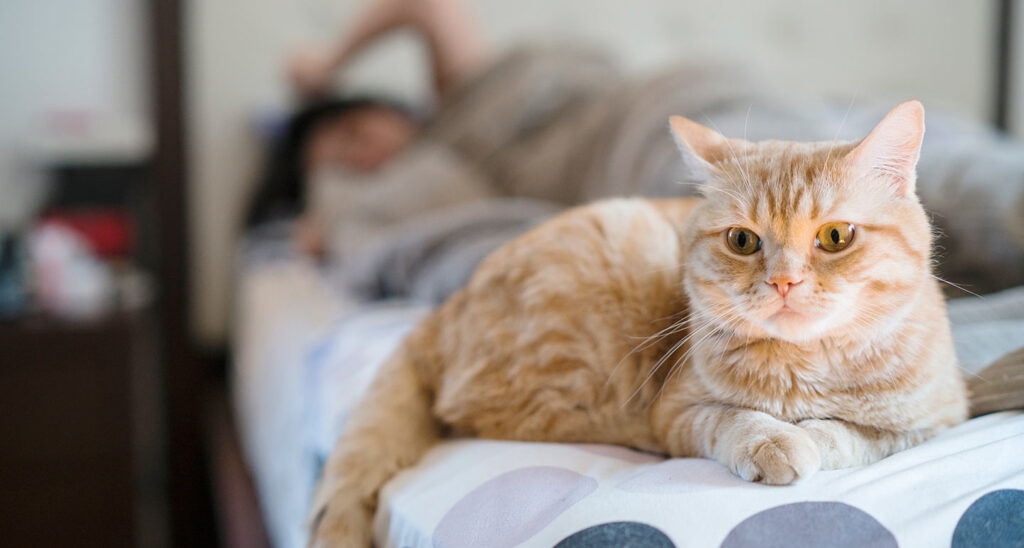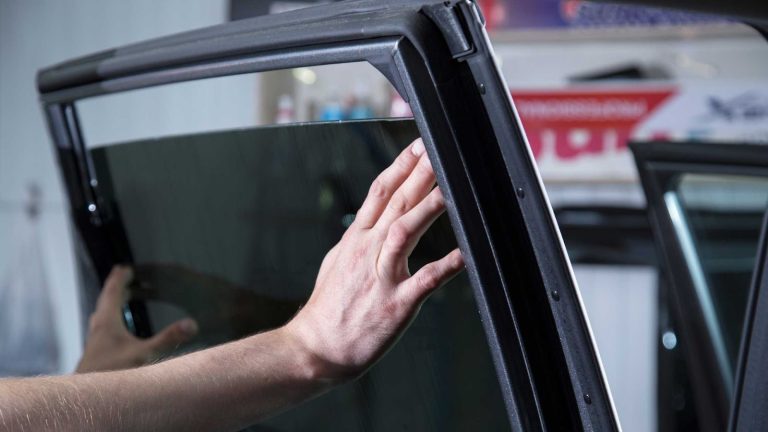
Table of Contents
“Why is my cat peeing on the bed?”
If you’ve ever woken up to find that your sheets are soaked in cat urine, you know how horrifying it can be. Unfortunately, this is a reality for some pet parents. There are several reasons why your cat might urinate on your bed, including medical problems.
“If a cat is urinating out of the litter box, it could be a sign of bladder stones or a bladder infection, both of which cause severe inflammation and an urge to urinate,” says Adam Eatroff, DVM, DACVIM, staff internist and nephrologist and the director of the hemodialysis unit at ACCESS Specialty Animal Hospitals, based in Los Angeles.
Dr. Eatroff suggests that while a cat peeing on a bed might be a biological problem, it is usually rooting from an anxiety or stress-induced issue. This can disturb several hormonal and chemical balances in the body, which is commonly known as idiopathic cystitis; inflammation of the bladder with an unknown cause.
“Idiopathic cystitis is most likely caused by hormonal imbalances and is best prevented by reducing stress,” said Dr. Eatroff.
There are a few possible reasons why your cat might be urinating on your bed, so it’s important to rule out any medical causes by taking them to the vet first. If they give your cat a clean bill of health, here are five potential explanations for this behavior:
- Your cat feels stressed and is using urine to mark their territory.
- The litter box is too dirty for your cat’s liking.
- Your cat has a medical condition that makes it difficult to use the litter box (e.g. arthritis).
- You have recently moved house and your cat is still adjusting to their new surroundings.
- Your bed is simply more comfortable than the litter box!
The Litter Box Isn’t In a Good Location
Think about how you do your own bathroom business. You have a door you can shut. You’ve probably got the room decorated with knickknacks. Doesn’t your cat deserve some privacy and pleasantry, too?
“Perhaps your litter box is in a busy area, or it’s next to a noisy appliance like a clothes dryer, or one that turns on at random times like a furnace,” says Paula Garber, a certified feline training and behavior specialist based out of Briarcliff Manor, New York, and who runs Lifeline Cat Behavior Solutions.
It’s possible that the litter box was once in an ideal spot, but over time it has become less and less convenient.
“For example, the litter box might be in the basement, but the cat spends most of his time on the second floor of the house. Cats can see well in low lighting, but they do need some light to see. If the litter box is in a dark place with no light, a cat might be less inclined to use it, especially in a multi-cat household,” Garber says.
You Need More Cat Litter Boxes
Even if you have a few litter boxes set up around your home, it still may not be enough according to experts.
“Some cats prefer to urinate and defecate in separate litter boxes, and some cats will not share a litter box with another cat,” Garber says. “A good general rule is to have a litter box for each cat in the home, plus one more, and to provide at least one litter box on every level of the home.”
Probably not what you want to hear but it’s better than constantly having to clean your bed sheets. So if you want to avoid that, you know how many litter boxes your feline friend(s) will need.
Garber emphasizes that having multiple litter boxes is key, especially for kittens. “Kittens’ control over their elimination is not fully developed yet, so they need multiple litter boxes that are easily accessible to help prevent accidents,” she says. Additionally, Garber advises against scolding or punishing a kitten or cat when they’re in or near their litter box, as this will create a negative association with the box and cause the kitten to avoid it.
Your Cat Doesn’t Like the Type of Litter Box You Have
It may be time to take another look at your cat’s litter box. According to certified animal behaviorist Marilyn Krieger, there could be a number of reasons why your cat is avoiding the litter box.
“One possibility is that the box has a cover that traps odors or constricts her movement,” Krieger says. “This can make it difficult for her to get into a comfortable position to eliminate, which many cats dislike.”
Or, it could be a medical issue combined with an ill-fitted litter box. If your cat has arthritis, for example, the sides of the box may be too high, making it difficult for her to get in and out.
If you’re not sure what the problem is, Krieger recommends taking your cat to the vet to rule out any medical causes. Once you’ve determined that the issue is behavioral, you can work on finding a solution that will make both you and your cat happy.






